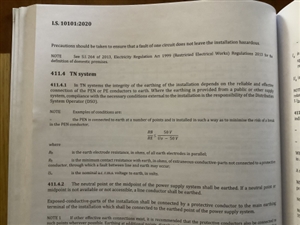
Perhaps you can shed some light on this condition for TNCS systems in the Irish Rules. I can only see that as RE decreases RB becomes more onerous but to be honest I am not really getting the essence.
1. No LV net has both TT and TN* customers. I'm not sure that's always the case in Germany, but I infer it's typical given that I've seen pages about a "network" (i.e. its customers!) all changing from one form to another: e.g. TT-TN or TN-TT). Imagine a DNO in the UK suddenly requiring that!
We're about to take you to the IET registration website. Don't worry though, you'll be sent straight back to the community after completing the registration.
Continue to the IET registration site